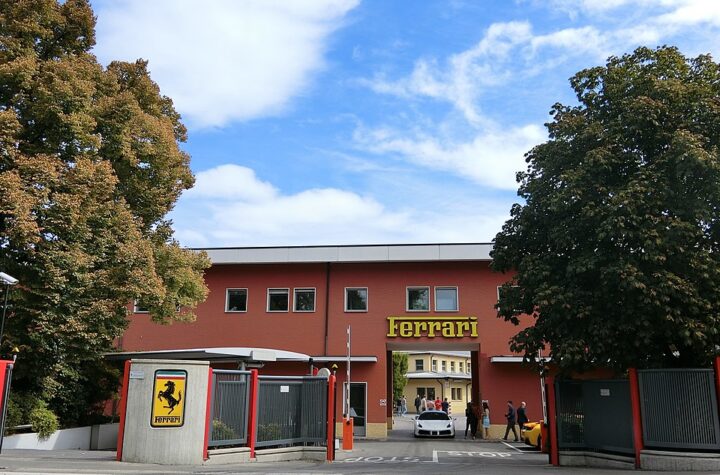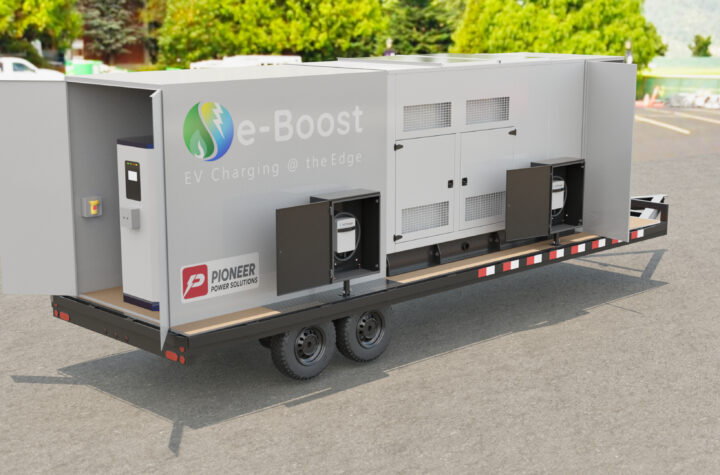
Inside the engine compartment and along the exhaust chain the wheel is turning a full circle as plastic parts which replaced metal are, in turn, being superseded by stainless steel couplings and tubing. Smaller engine and exhaust compartments require materials which are more flexible and resistant to higher temperatures than plastics. Advances in the manufacturing of stainless steel components also means that they are often lighter than the plastic alternative.
Automotive Industries (AI) asked Rolf Janssen, Executive Leader of the BOA Engineering Team how stainless steel helps reduce weight.
Janssen: Ultra-light thin wall stainless tubing is taking over from plastics in cooling and exhaust gas reticulation (EGR) routing. Advances in the design of engine and exhaust systems has resulted in durability and strength under cycling temperatures becoming an issue for some plastics. Stainless steel connectors and tubes also help manage vibration and suppress noise, vibration and harshness (NVH). There is a cross-over point where stainless ultra-thin wall bend tube is the preferred choice over plastic. Our solutions include bellows that allow tight packaging in the compartment. They are lighter than plastic, can withstand higher temperatures, are more durable and cost less. For example, the BOA stainless steel bellows media routing component is lighter than the plastic equivalent, and is guaranteed for up to 15 years or 1,000,000 miles. At the end of the life cycle the recycling of stainless steel has lower impact on the environment than polymers.
AI: Please give us other examples of flexible tube and connection systems for on-road trucks and buses as well as off-road vehicles.
Janssen: The BOA Group has been developing metal formed solutions for more than a century. The focus of our products today is on diesel emission systems, where BOA is the leading developer and manufacturer of stainless steel products. They include flexible components for high-temperature exhaust routings, intercooler routings with bellows and flanges, and other components which help reduce weight. BOA Flex Modules reduce and suppress NVH, enabling light weight vehicle structures, thin wall exhaust systems, less body sound proofing, and higher system durability. BOA systems which help reduce emissions include a flexible seal with heat retention for exhaust emission systems; active spring seals for lean fuel injection systems and high pressure hoses for CO2 HVAC which provide durability and low permeability. Additionally, the BOA Group has developed new decoupling designs along with engineering services in order to help customers meet their durability targets. Essentially, we provide solutions for customers by solving challenges created by tighter vehicle assembly tolerances, and by isolating destructive vibrations and maintaining thermal insulation.
AI: How do you help customers meet the ever-increasing demands of emission legislation?
Janssen: EnduroFlex is the perfect decoupling system for today’s commercial vehicle exhaust systems. It helps manufacturers meet the stringent demands of EuroVI legislation. BOA Enduro- Flex is the only system in the world offering a gas-tight warranty. Our technical features and engineering methodologies bring best in class standards of thermal insulation and installation alignment, allowing us to offer 1,000,000 mile warranties to our customers.
AI: How important is reliability in the commercial vehicle sector?
Janssen: Functional performance and durability is essential for commercial vehicles. Unplanned downtime is not acceptable. This is true for on and off-road vehicles. The design life and proven durability of our flex hoses meets the need for reliability. We can design and validate our products over a wide range of applications and to meet the desired durability standards.
AI: How do you address the problem of shrinking packaging space in the exhaust routing?
Janssen: BOA design calculators and 6 DOF (degrees of freedom) validation provides our customers with tailored and optimized product design according to their needs – reducing application size, weight and cost. The BOA Ultra Flexible Hoses accommodate the growing use of after-treatment systems, which further restricts space. This trend calls for exhaust flex hoses that are able to accommodate large motions and assembly offsets within a minimal packaging envelope. BOA has also developed VDU (vibration damping unit), a load bearing joint which can support sections of tubing with fewer adjacent brackets. Over 7,000,000 VDU type decoupler have been produced and fitted to vehicles, without a single warranty claim.
AI: What product do you offer for the future lightweight exhaust systems?
Janssen: We will support full decoupling of engine motion for lightweight exhaust systems. Exhaust systems are being structured and mounted differently to reduce weight and may not need to support themselves in traditional ways. This requires a flex hose that will fully isolate the engine motion and possibly the vibration of the engine to chassis. BOA’s EnduroFlex hose is developed for such systems. The bellows are manufactured at the limit of material elongation through a special tube milling and hydroforming process.
AI: What product validation process do you have in place?
Janssen: Dynamic Load Profile of Flex hoses undergo validation through six Degrees of Freedom, the reaction forces of the flex hose must be validated very accurately in 6 DOF load to assure that sensitive light weigh components of the after treatment system are not adversely affected. In addition the environment calls for longer durability cycles that need to be lab tested in 6DOF. Some truck applications require up to one million miles, which are simulated in our laboratories to reduce time to market.
AI: There is a lot of talk of ultra-light thin wall stainless tubing taking over plastics in cooling and EGR routing. What solutions do you offer in that respect?
Janssen: EGR pipes ensure the transportation of hot exhaust gas back from the exhaust line to the intake air flow and do so in the high pressure stream as well as the low pressure one. The 1.4541, 1.4571 and 1.4828 stainless steels are particularly adapted to peak temperature up to 900°C for these types of applications. They avoid corrosion and pipe deformation under temperature and harsh operating conditions. Corrugations located in the bends or on the straight portions provide flexibility in the pipe, improve durability, facilitate pipe assembly, and reduce weight by using thinner pipes. In addition, flanges O-ring special fittings, O-ring, gasket according the customer or BOA standards coupled with our experience will ensure a low connection leakage and benefit for Euro 4, 5, 6 regulation norms. The BOA Group offers EGR pipes from diameter 20 to 32mm for light vehicle applications and up to 50mm for heavy vehicle applications. BOA components are also designed for the latest generation of gasoline engines where the direct injection systems are particularly compact and exposed to high temperatures. In some cases, the use of rubber or plastic pipes is no longer possible. The use of BOA stainless steel tubes constitute a robust alternative combining lightweight and flexibility by using grades 1.4301 and 1.4541. As these pipes are often visible for the end customer, the shiny surface of metal is a real design benefit. Solutions with integrated plastic quick connectors and any kind of special fittings can be provided. The BOA Group offers air tubes with diameters from 14,6 to 32 mm and 0,2 to 0,5 mm wall thicknesses.
AI: What is your approach to turbo noise decoupling?
Janssen: All diesels, and even smaller gasoline engines, are equipped with turbo chargers that rotate at more than 20,000 RPM, so generating noise at frequency levels that cannot be addressed with conventional flex hoses. Alternatives are dampers that add weight to the exhaust systems to change resonance behavior. BOA has a solution that uses a bellows in line with the exhaust system that does not add weight. The BOA high frequency damper (HFD) dampens and prevents transmission of high frequency vibrations within turbocharged exhaust structures, increasing the acoustic comfort of the vehicle. The high frequency damper is very stiff and self-supporting. It consists of a special multi-layer bellows with a maximum of five corrugations, combined with a damper cushion which is installed on the inlet side of the damper. This significant reduction of structure-born noise is achieved at low cost and high efficiently.
AI: What can we expect from BOA in the future?
Janssen: Projects on which we are working include improving waste heat recovery, the substitution of plastics, the connection of metal to plastics and other dissimilar materials, active muffler valves, modular systems, high performance materials, variable load bearing flexible hoses and couplings which help manufacturers reduce emission levels while offering improved vibration resistance.














More Stories
Renesas Introduces New MOSFETs with Exceptional Performance
VicOne at CES 2025 Showcases Award-winning Cybersecurity Portfolio and Emphasize Growing Range of Best-of-Breed Partnerships
Pioneer Announces e-Boost Order Valued at $1.3 Million